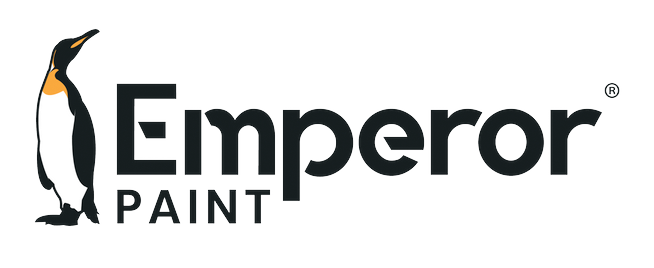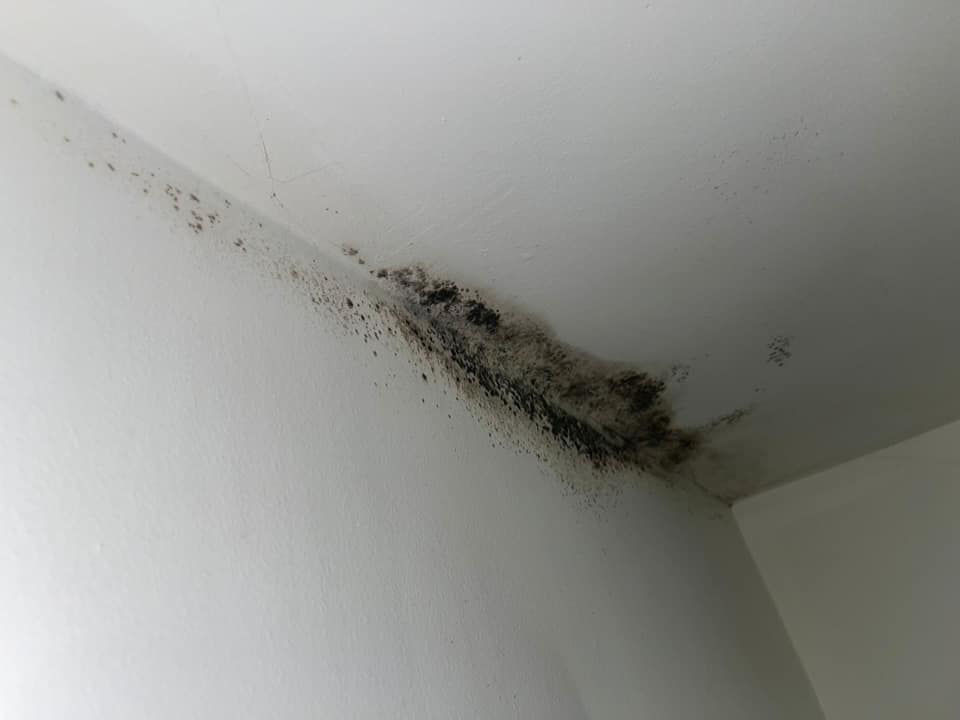
Are you suffering from damp and condensation issues in your home and looking to find a long-term permanent solution? There is a wide variety of treatments on the marketing that are designed to achieve a variety of things, which is why our experts have put together this ultimate guide to anti-condensation paint, which contains everything you need to know all in one place.
Understanding Damp & Condensation
Damp, mould and condensation are all things you will commonly hear used synonymously, however the reality is these are all referring to different things.
Damp is caused when a building is suffering from water ingress, which is saturating the building materials of the structure. Damp can be caused by moisture originating from one of any number of areas, including the roof, exterior walls or the internal environment of the property. This is why there are three broad types of damp; rising damp, penetrating damp & condensation.
RISING DAMP
Rising damp is caused when moisture from the ground travels up through the external walls of a property through a process called 'capillary action'. This rising damp is made possible when a damp proof course (DPC) is either missing or failing. Without the water resistant barrier that a damp proof course any moisture from the ground can be soaked into the bottom layer of the wall. You can identify rising damp as it starts at the ground-level of a property, causing rotting skirting boards and damp patches on interior plaster which continues to rise up the wall.
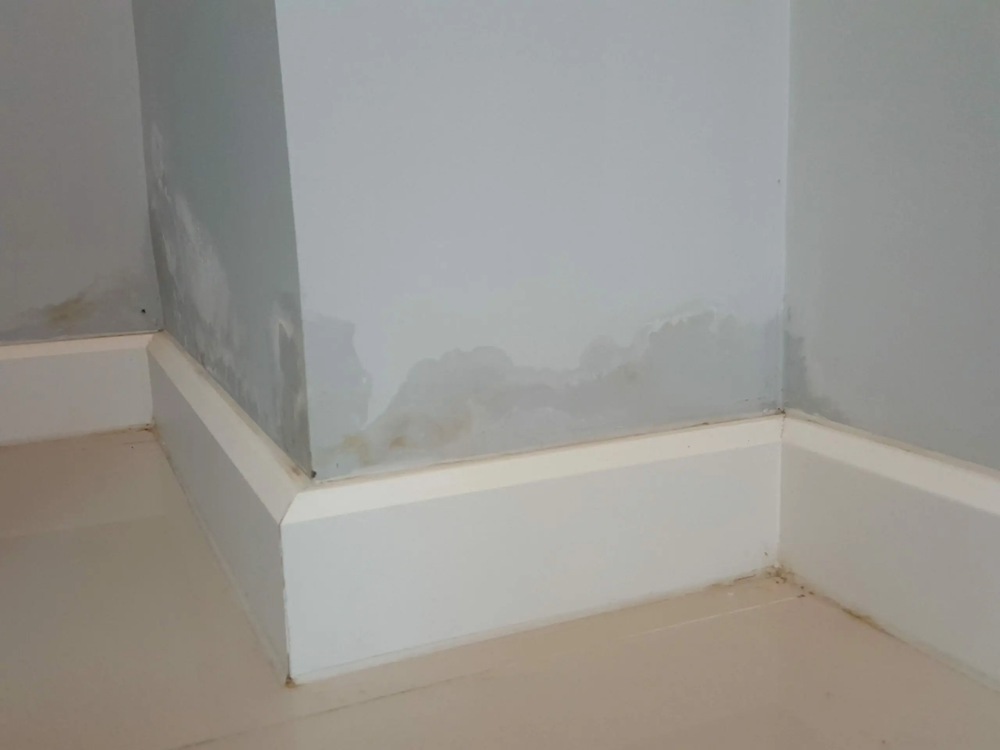
PENETRATING DAMP
Penetrating damp is caused by an external source of moisture like rising damp, however penetrating damp is caused by water from wind-driven rain soaking through the external wall of a property. Contrary to popular belief, exterior masonry walls are porous, meaning they can absorb moisture. Eventually, the moisture makes its way into the internal wall of a property causing large-scale damp problems. Penetrating damp can be identified by fungus and discolouration on external walls, internal mould and by any signs of damage to the external wall like cracked bricks or crumbling mortar.
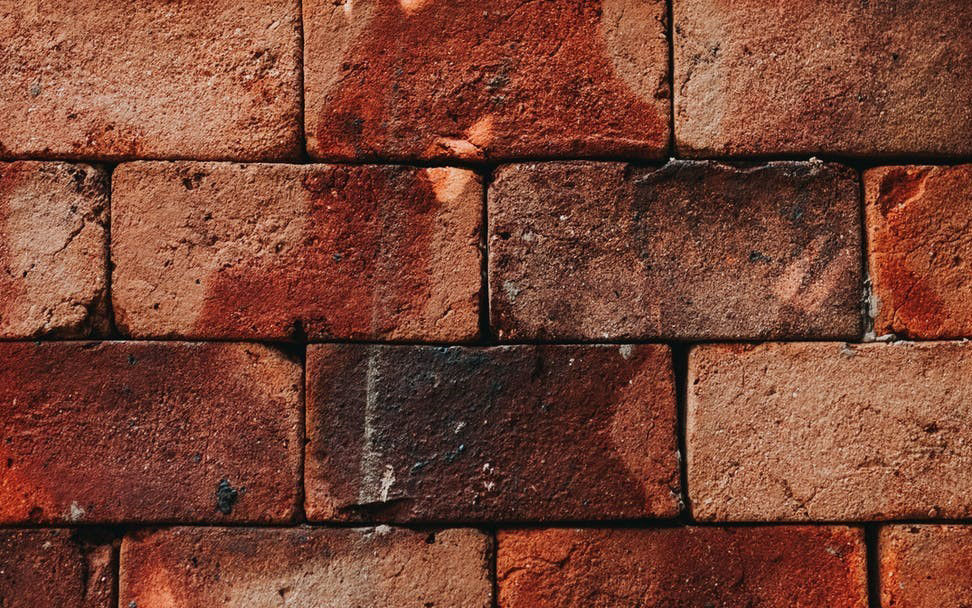
CONDENSATION
Damp can not only be caused by an external source of moisture, but also by an internal source of moisture. Through the day-to-day living within our homes such as dryers and showers, a large amount of condensation is created. This condensation can be caused by poor ventilation or due to in high humidity such as in kitchens or bathrooms. Black mould is the key indicator of damp caused by condensation, as well as water collecting on windows.
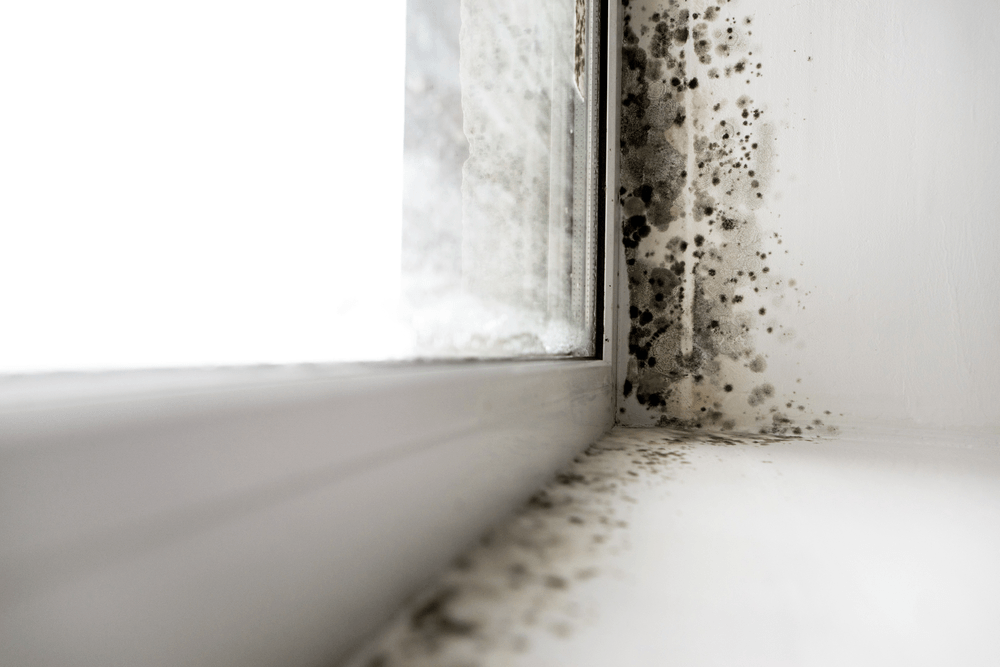
Whether it is rising damp, penetrating damp or condensation, a primary side-effect of damp is mould growth. Mould thrives in warm, moisture-rich environments, which is why if you want to prevent black mould and other damp related problems, it is crucial to identify the source of the moisture and address it.
How To Treat Damp Problems
As we have discussed, damp problems are created in a number of ways, which means the most effective treatment will depend on the type of damp you are receiving.
RISING DAMP
Rising damp treatment involves either implementing or repairing a damp proof course (DPC) on the property. A damp proof injection cream is inserted into holes across the bottom layer of the building, which create a water resistant layer to prevent the transfer of moisture from the ground. This is a difficult project to undertake, so it is recommended that you contact a damp expert if you have identified that rising damp is the likely course of problems.
PENETRATING DAMP
If moisture is absorbing into the external walls of a property, this is because either the masonry is completely bare and untreated or that a non-waterproof paint was used that is allowing moisture to absorb into the wall. This can be addressed by providing the exterior walls with waterproofing properties to prevent any moisture from transferring into the property. When using a waterproofing product, it is important to ensure you use a highly breathable product. If a product with low breathability is used, any moisture within the property will become trapped, as you prevent the ability for the walls to naturally breathe. Low breathability products include brick sealers, oil-based masonry paints and acrylic-based masonry paints, which generally do not have the SD value of below 0.5, which is what a product must have to be considered breathable.
There are two options when it comes to applying a highly breathable waterproofing product to masonry, a masonry cream or a waterproof masonry paint. While a waterproof masonry paint creates a coloured painted finish, a masonry cream is a completely invisible treatment for bare brickwork and masonry. Both Emperor Masonry Paint and Emperor Masonry Creme create a super hydrophobic (ultra water-repellent) surface on exterior walls which prevents penetrating damp, while maintaining full breathability of the wall. This not only helps to protect the brickwork but means that interior walls will not become saturated with water and lead to black mould growth.

Both treatments thanks to their highly advanced technology come with a lifetime guarantee, as during independent 25 year testing they were found to perform in harsh weather conditions for a minimum of 25 years without affecting performance or appearance, meaning they will likely far exceed this life span.

CONDENSATION
Now we come to how to treat condensation, which is where anti-condensation paint comes in. Other terms you may come across include 'anti-damp paint', 'anti-mould paint' and 'thermal insulating paint'. While all of these paints may seem to do the same thing, there are distinct differences. Anti-mould and anti-damp paints contain boicides which kill black mould before it can begin to bloom on the surface of interior walls. These products while they can be effective do not prevent the root-cause of the moisture, which is the condensation. Furthermore, they generally cannot be painted or overcoated as they must work on the surface of the wall.
In contrast, anti-condensation paint and thermal insulating paint work to prevent the formation of condensation in the first place. These paints achieve this by absorbing and holding heat longer than standard emulsions, meaning condensation cannot form on the surface of the wall as it is evaporated away. These anti-condensation properties make these treatments highly effective for bathrooms, kitchens and cold rooms where condensation can easily form due to the cold walls.
Frequently Asked Questions
Q. WILL ANTI-MOULD PAINT PREVENT CONDENSATION?
Anti-mould paints contain a fungicidal additive which kills black mould when it begins it bloom on the surface of the painted wall. This additive does not prevent the formation of the condensation however, so is not always an effective solution at preventing black mould growth in the long-term, which is why anti-condensation paints are generally recommended for condensation related issues.
Q. WILL ANTI-CONDENSATION PAINT PREVENT DAMP PATCHES FROM LEAKS?
While the warmer surface of the anti-condensation paint prevents cold walls which are more likely to allow condensation to develop, if there is an internal leak this level of moisture will lead to damp problems if not addressed.
Q. WHAT IS THE BEST WAY TO KEEP WALLS FREE FROM DAMP?
No matter what type of property your home is, the chances are you will suffer from some level of damp, either from penetrating damp soaking into the external walls of your home or from condensation build-up. The best way to completely protect your home from damp problems is to apply a highly breathable waterproof masonry paint to outside of your home and then apply a thermal insulating, anti-condensation paint to interior walls that are prone to condensation. This way, you are preventing the build-up of moisture inside the home and keeping out the moisture from outside. Both of these treatments will also help to improve the energy efficiency of your home, as wet walls transfer heat 50% quicker than dry ones. With 35% of heat being lost through the external walls of properties, by keeping your interior and exterior walls dry, you help to also keep them warm.
Q. IS BLACK MOULD DANGEROUS?
In short, black mould can be a detrimental effect on the health of inhabitants of a property. As stated on the NHS website, "if you have damp and mould in your home you're more likely to have respiratory problems respiratory infections, allergies or asthma". The elderly, young children and those with existing medical conditions can be particularly prone to problems.
Q. WHAT ARE SOME EASY WAYS TO IDENTIFY WHAT TYPE OF DAMP I HAVE?
While all types of damp require moisture in order to develop, the source of the moisture will vary as we have discussed. It can either be an internal source of moisture from condensation or even a water leak, or an external source of moisture.
Rising damp will only form at the very bottom of the property and will slowly rise up the walls. If the damp does not run down to the very bottom of the wall, this cannot be rising damp.
Penetrating damp can occur at any level of the building and will only appear on external facing walls. Cracked brickwork, peeling external paint or visibly wet exterior walls will indicate if moisture is entering through the external wall of the property. This is because the moisture that causes penetrating damp leads to the deterioiration of the external walls of the property. If the damp patches appear at random points above ground level, this will also indicate penetrating damp.
Damp caused by condensation can be identified by mould growth and through excess moisture appearing on any cold surfaces such as windows. Condensation is likely to occur behind furniture and in problem rooms such as bathrooms or kitchens.
We hope we have answered any questions you may have had regarding anti-condensation paint. If you have any other questions or would like advice identifying what the best solution for you is, feel free to get in touch with our team of experts who are on hand to assist you. Contact them today by emailing info@emperorpaint.co.uk or calling them on 0161 509 9009.

